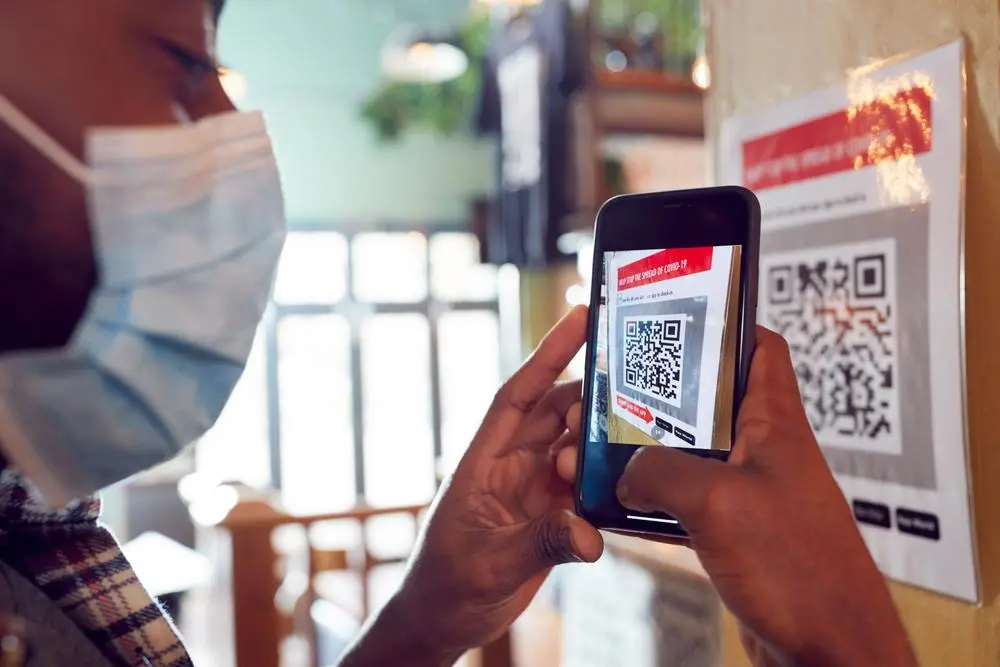QR codes have been around since the late 90s, but the technology seemed to be ahead of its time. It wasn’t until recently that there has been widespread adoption and increased use of QR codes. A QR code allows for scanning and automatic data capture, embedding 200 more times information than a standard barcode with its unique pattern.
With the onset of COVID-19, QR codes surged into popularity as the general public valued contactless, hygienic interactions. Paper materials were replaced by QR codes, and many audiences were using them more often.
Here are five tips for making QR codes work for you to generate new patient leads for your practice:
1. Expand your target audience for new patient leads
In addition to the pandemic, another reason for the wider adoption of QR codes is the improvement of the smartphone camera. At first, a third-party app was required to scan codes but now smartphones can decode QR information directly on the camera app. Simply open the camera on your smartphone and hover over the QR code. That’s it! The link will pop up and take you to the information.
This leads to greater functionality and widespread use of QR codes across target markets. According to the U.S. Census Bureau in the 2018 report, 84 percent of households had a smartphone.
According to QR-Tiger, consumers between 24-54 had the most interaction with QR codes. Older patients may not be aware of QR technology, but 86 percent have a smartphone. With a little education, this audience can also adapt QR codes on a larger scale.
If you are looking to generate new patient leads, you can expand your target audience through QR codes.
2. Connect providers and patients
If you are looking to generate new leads, consider using QR codes to improve the provider and patient experience.
This can include a QR code that leads patients to:
- An appointment request
- A review request
- An informational video about a medical condition
- An introduction to the provider
- Onboarding paperwork and medical records
- Scanning medical records
- Improving medications and treatments
The possibilities are endless to help patients feel confident in their healthcare providers. The use of this technology shows you are up-to-date and may impress many potential patients.
Most of all, it helps improve the patient experience as they are able to more quickly and accurately exchange information with the practice.
3. Simplify marketing efforts
When it comes to marketing, you want to grab attention. The way many digest information now is through dynamic video or eye-catching materials. The benefit of a QR code for marketing is to direct patients to something more powerful, engaging, and effective.
Some examples of QR codes for new patient leads in medical marketing include:
- Link QR codes to websites, landing pages, or blogs
- Use the QR codes to link to multimedia such as videos or podcasts
- Improve waiting room posters with QR codes for more information
- Add codes to newsletters or flyers
- QR codes can be added to emails or other electronic communication
- Utilize QR codes for a contact us page or to get in touch with a patient
4. Quickly request patient reviews
You can also request reviews with QR codes. A simple scan of the code in the waiting room or after a visit can generate feedback for your practice.
Often it can be difficult to navigate the best place to leave a review, as there are many websites and options for patients. Instead, with a QR code, a patient can quickly navigate to the exact place to input their review. This can help you increase the number of online reviews for your practice.
5. Improve access to health and medical information
There are countless opportunities for QR code use when providing educational materials to patients. QR codes can help alleviate some of the burdens of looking for a diagnosis, treatment, patient care instructions or other desired medical information. The QR code can take them directly to that information online without having to search for it.
These QR codes can also be embedded into a bracelet or other identifier to help medical staff better authorize and access records. This saves time and is more accurate and efficient than standard paperwork.
When it comes to new patients, you can help them feel confident in your practice and get them the answers they need. QR codes can help to streamline processes, reduce errors, and increase productivity as you work to serve your patients.
Overall, there are many possibilities to use QR codes. These five tips are just a few ideas to help you use QR codes to improve your patient leads and help deliver exceptional care.
Let Practis help improve your practice’s use of technology. Contact us to learn more.

